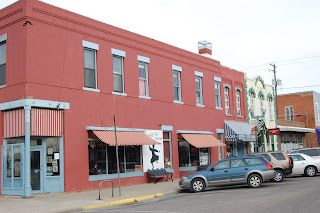Laramie began life in 1867 as a hell-on-wheels tent town preceding
the Union Pacific Railroad construction. The UP was crawling up the Gangplank
between Laramie and Cheyenne, and Laramie was established as a future train
stop and to supply the railroad’s insatiable need for wood and water. Where UP
crews went, so did liquor and ladies of lesser repute. Laramie’s downtown
architecture is testimony to that past.
Today, Laramie is a generally quiet town, home to the
University of Wyoming. Take a visit to Laramie’s downtown, a haven for locally
owned restaurants and stores, for a glimpse into that wild past. As you stroll around
downtown, particularly between Ivinson Avenue and Garfield Street, and from
First Street east to Third Street, the older buildings have a large bottom
floor with big windows overlooking the street. Look up to the second floor for
a clue to the building’s past. Many second stories have narrow windows set at
regular intervals. These second floors were establishments that many gentlemen,
upon exiting the trains, would look for. The respectable businesses on the
first floor were often supported by the activities on the second floor.
 | |
| Second Story Book Store, under second red canopy. |
 |
| One of the alley apartments |
Prostitution played important roles in Laramie’s past. One
was that of informal bankers. Because prostitutes were often the few women who
had money of their own, they made loans to respectable women unable to get bank
loans. In addition, when city fathers found coffers running low, they would
raid downtown, fine the ladies and replenish city finances. The heyday of
formal houses of ill repute in Laramie was short. In 1889, Laramie’s
prostitutes had been driven off main streets and Laramie settled into western
domesticity.
No comments:
Post a Comment